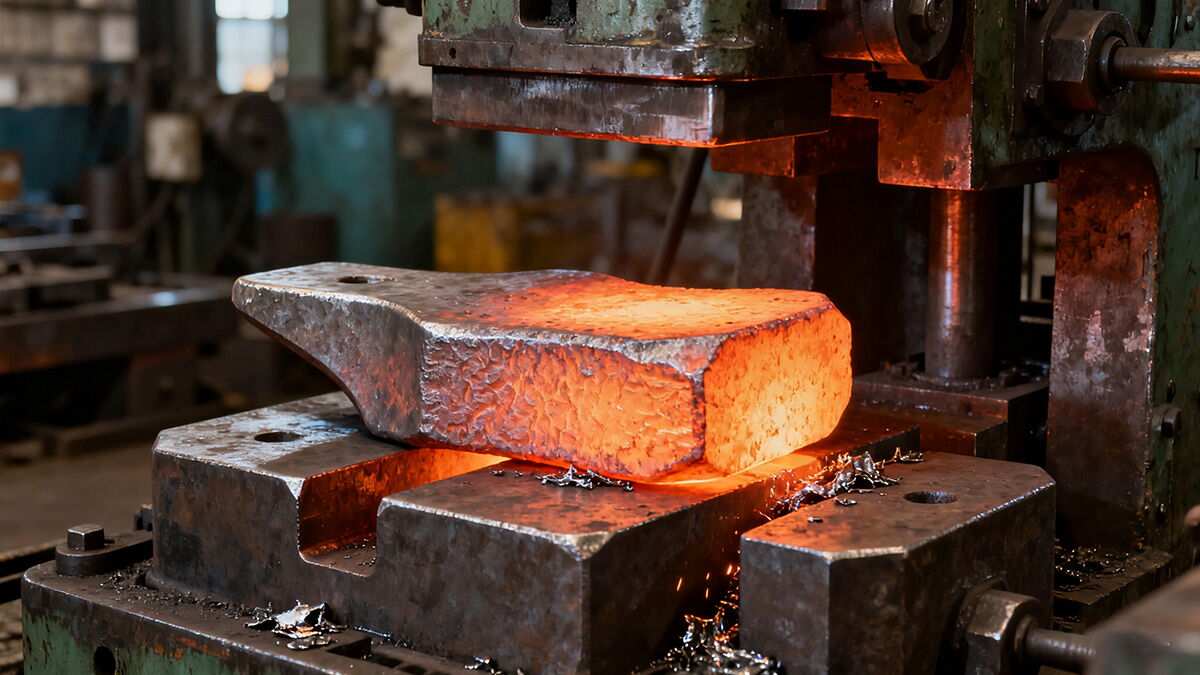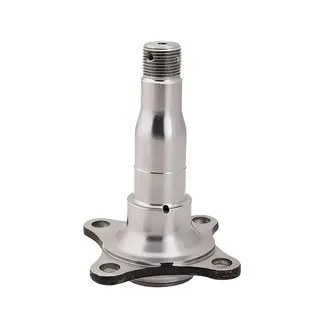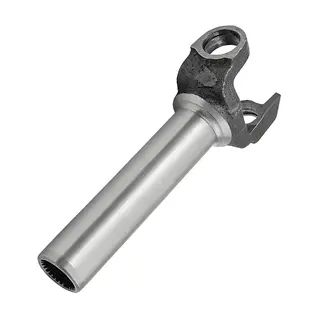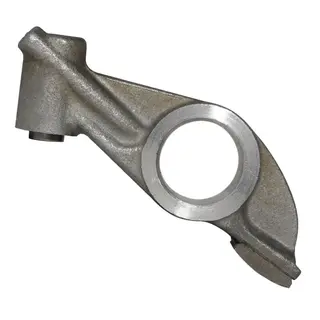Open-die forging is one of the oldest and simplest forms of forging. It involves deforming a heated workpiece between two flat or simply shaped dies that do not completely enclose the material. Because the dies remain open, the operator or automated system must manipulate the workpiece to gradually achieve the desired shape.

The raw billet or ingot is heated to forging temperature, typically 1900°F–2250°F (1040°C–1230°C) for steels, though the temperature depends on the material being forged.
The heated workpiece is placed on a stationary anvil or between two flat dies.
A hammer or press applies compressive force in repeated strokes. The operator repositions and rotates the workpiece between blows to control deformation.
The metal is progressively shaped into the required form, such as elongated shafts, rings, blocks, or discs.
After forging, machining is usually required to bring the workpiece to precise dimensions and tolerances.
The dies are typically flat, V-shaped, or semi-round, and do not restrict the flow of material.
Because the process allows free movement of the metal, it is not well-suited for precise or intricate shapes.
It is widely used for producing large components weighing from a few kilograms up to several tons.
Continuous grain flow results in stronger and more fatigue-resistant components compared to castings.
Low tooling cost: Since dies are simple and reusable, production setup costs are minimal.
Flexibility: The process can accommodate a variety of shapes and sizes, including extremely large parts that cannot be produced by closed-die forging.
Improved material properties: Grain flow is refined, voids are reduced, and strength and toughness are enhanced.
Shorter lead time: Because it does not require custom dies for every part, new jobs can be set up quickly.
Longer component life: Open-die forging improves fatigue resistance and extends service life in demanding applications.
Imprecision: Dimensions are not as tightly controlled as in closed-die forging, making machining necessary.
Limited complexity: Cannot produce parts with intricate or detailed features.
Operator skill: The process often depends on skilled manipulation of the workpiece, especially for custom shapes.
Inconsistent results: Tolerances and repeatability are less predictable compared to closed-die forging.
Heavy industrial components such as shafts, cylinders, rollers, discs, and large rings.
Custom one-off or low-volume forgings for industries like aerospace, shipbuilding, and power generation.
Situations where material integrity and strength are more critical than tight dimensional accuracy.


